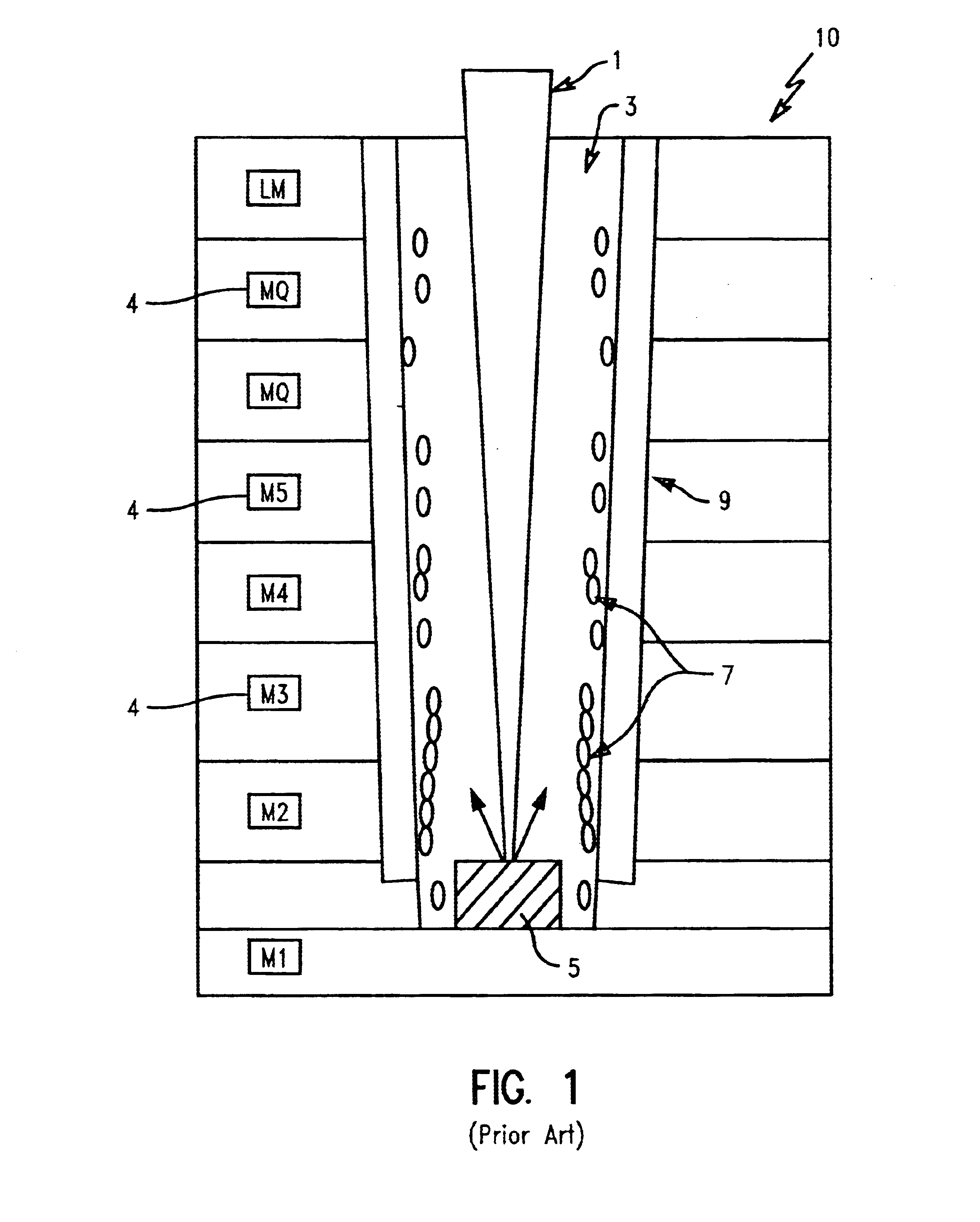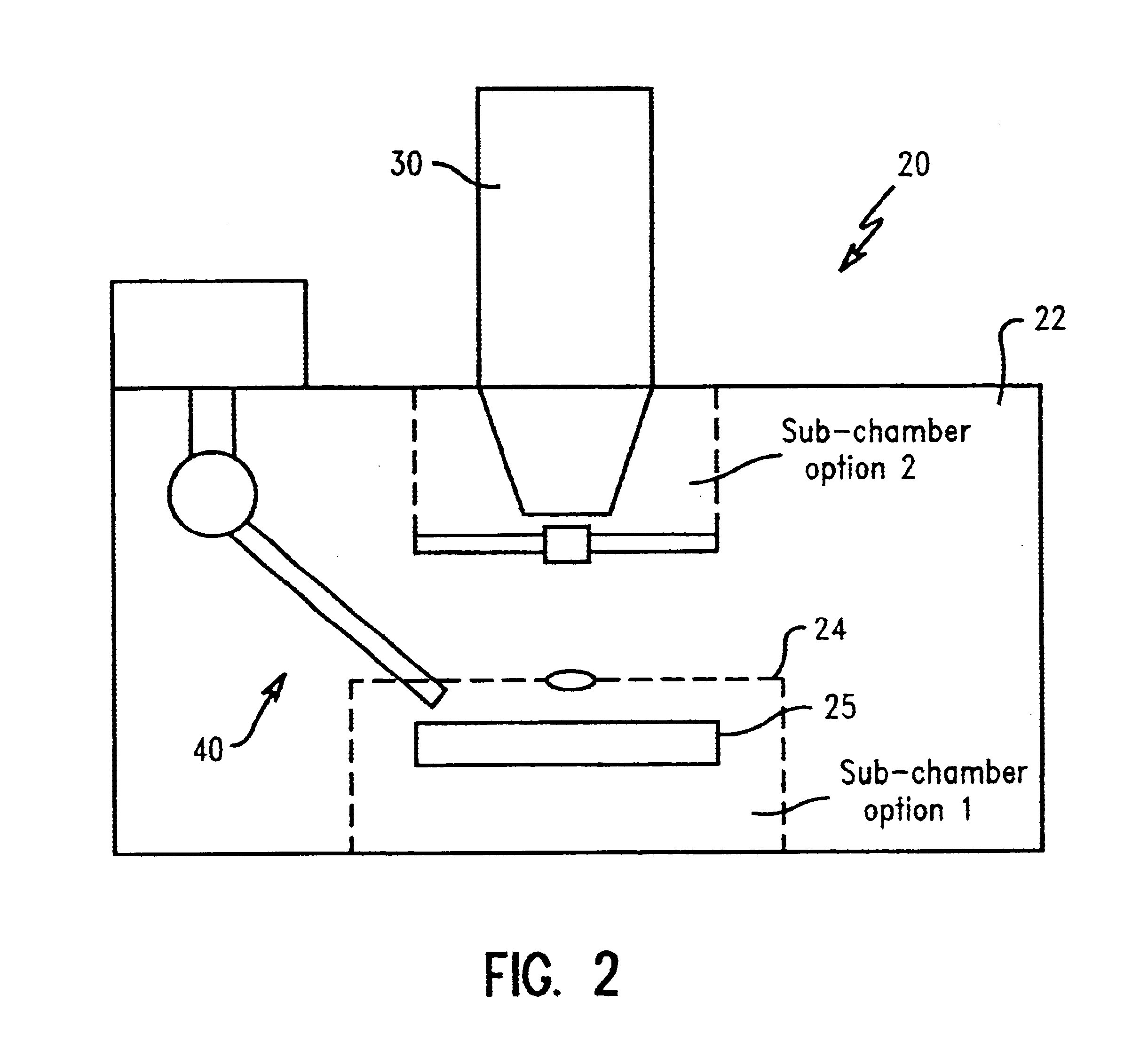Apparatus and techniques for scanning electron beam based chip repair
a scanning electron beam and chip technology, applied in the field of semiconductor chip repair and editing, can solve the problems of gallium contamination, physical sputtering of the sample surface, and damage to the sample surfa
- Summary
- Abstract
- Description
- Claims
- Application Information
AI Technical Summary
Benefits of technology
Problems solved by technology
Method used
Image
Examples
Embodiment Construction
)
In describing the preferred embodiment of the present invention, reference will be made herein to FIGS. 1-14 of the drawings in which like-numerals refer to like features of the invention. Features of the invention are not necessarily shown to scale in the drawings.
The present invention is directed to an apparatus and methods for repairing integrated circuits (ICs), wherein repairing encompasses the editing and prototyping of such ICs, using electron-beam-induced chemical processes that may be assisted with low-energy ions, or optically with focused light. The invention overcomes the above problems associated with conventional apparatus and techniques for repairing and editing ICs, such as liquid metal based focused ion beam (FIB) induced processes. These problems include, but are not limited to, IC electronic device damage, wafer surface contamination, re-deposition of conductive metal interconnect byproducts that can electrically short IC features, and damage of the preferably in...
PUM
 Login to View More
Login to View More Abstract
Description
Claims
Application Information
 Login to View More
Login to View More - R&D
- Intellectual Property
- Life Sciences
- Materials
- Tech Scout
- Unparalleled Data Quality
- Higher Quality Content
- 60% Fewer Hallucinations
Browse by: Latest US Patents, China's latest patents, Technical Efficacy Thesaurus, Application Domain, Technology Topic, Popular Technical Reports.
© 2025 PatSnap. All rights reserved.Legal|Privacy policy|Modern Slavery Act Transparency Statement|Sitemap|About US| Contact US: help@patsnap.com



